Eir, the Norse goddess of healing, shines as a beacon of hope in the rich tapestry of Norse mythology. Her significance extends far beyond her divine peers, for she is the embodiment of restoration and well-being in the realm of the Aesir and Vanir. In a world where gods and giants clash, and fate itself hangs in the balance, Eir’s presence is a soothing balm, offering solace and respite to those wounded in the tumultuous battles of the cosmos. In this comprehensive exploration, we embark on a journey to uncover the depths of Eir’s character, her pivotal role in Norse mythology, and the enduring legacy she leaves behind. Join us as we delve into the captivating world of Eir, the divine healer, and discover the profound impact of her benevolent presence on the myths and legends of the ancient North.
| Origin | Norse Mythology |
| Deity Type | Goddess of Healing and Medicine |
| Role | Goddess associated with healing, medicine, and medical skills |
| Attributes | Known for her expertise in the art of healing |
| Cultural Impact | Revered as a symbol of health and well-being in Norse culture |
| Depictions | Mentioned in various Norse myths and sagas, particularly those related to healing and medical knowledge |
1. Who is Eir?
Eir’s Origins and Family Connections
Eir, the Norse goddess of healing, emerges from the rich tapestry of Norse mythology as a figure of profound importance. To truly understand her role and significance, it’s essential to explore her origins and family ties within the pantheon of the Aesir and Vanir.
Eir traces her lineage to the divine realm, where she holds her esteemed position among the Aesir, the principal group of deities in Norse mythology. She shares her association with revered fellow Aesir, including Odin, Thor, and Frigg, underscoring her prominent place of honor among these formidable gods and goddesses.
While her exact parentage may vary in different sources, Eir’s divine heritage is undeniable. Some accounts suggest that she is the daughter of the Aesir god of wind, Ægir, and the sea goddess, Rán, cementing her connection to the natural elements. Others depict her as a descendant of the revered god of healing, Mímir, reinforcing her role as a healer of great repute.
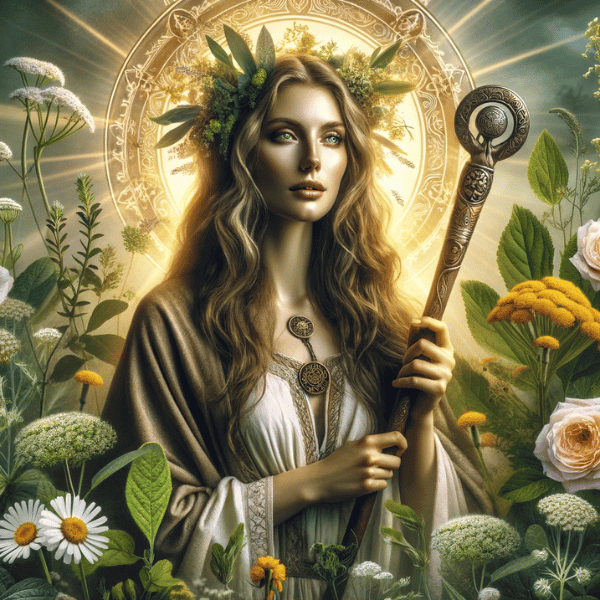
Domain and Role as a Healer
Eir’s presence in Norse mythology revolves around the vital domain of healing and medicine. She is the compassionate guardian of well-being, a beacon of hope in a world fraught with chaos and conflict. Her role as a healer is both profound and sacred, as she tends to the physical and spiritual wounds of gods and mortals alike.
In the realm of the Aesir, where battles rage, and warriors fall, Eir’s abilities are indispensable. She possesses a deep understanding of the medicinal properties of herbs, the art of soothing remedies, and the wisdom to mend even the gravest of injuries. Her benevolent nature and extraordinary skills make her the first choice for those in need of healing, be they gods or heroic champions.
Eir’s significance extends beyond her immediate role, as her presence brings a sense of reassurance to the pantheon. Her domain as a healer not only mends wounds but also underscores the importance of well-being and recovery in the harsh Norse world. She is a symbol of resilience and the enduring hope that even in the face of adversity, restoration is possible.
2. Eir in Norse Mythology
Delving Deeper into Eir’s Role
Eir’s prominence in Norse mythology is not confined to her status as a healer alone. Her character transcends the boundaries of a single narrative, making her a recurring and revered figure in various mythological texts and stories.
Eir’s presence can be felt throughout the annals of Norse mythology, as she plays a vital role in many tales that revolve around the well-being of the gods and the fate of mortals. Her ability to mend wounds and restore health places her at the center of pivotal narratives, often as the catalyst for the resolution of conflicts and the preservation of divine harmony.
Interactions with Gods and Goddesses
Eir’s connections with other gods and goddesses, particularly within the Aesir and Vanir pantheons, shed light on her significance in the divine hierarchy. Her interactions with these powerful beings provide insights into her respected position among the Norse deities.
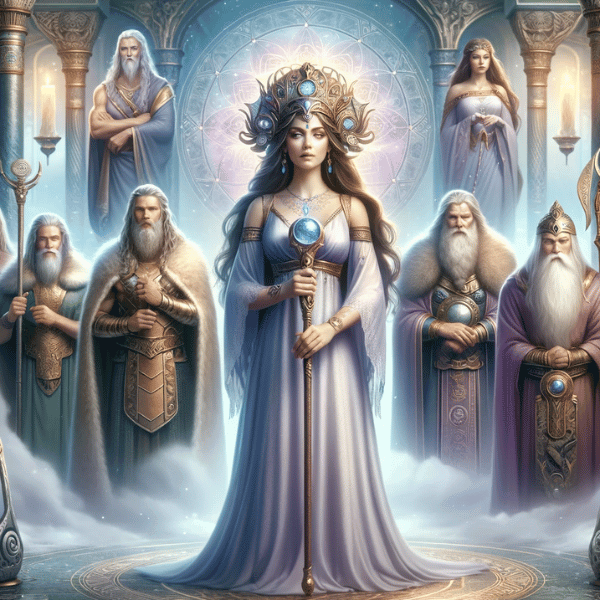
Within the Aesir, Eir’s relationships with gods like Odin, the Allfather, and Frigg, the Queen of the Aesir, demonstrate her role as a trusted healer to the divine elite. She is frequently called upon to tend to their injuries, emphasizing her indispensability in the world of the gods.
In addition to her interactions with the Aesir, Eir’s connection to the Vanir, a distinct group of deities associated with fertility and nature, further enriches her character. These interactions reflect the interconnectedness of the divine realms and highlight her versatility as a deity who transcends pantheon boundaries.
3. Eir’s Attributes and Symbols
Symbols and Attributes Associated with Eir
In Norse mythology, Eir, the goddess of healing, often embodies her divine essence and the crucial role she plays through a set of distinct symbols and attributes.
One of her most recognized symbols is the healing staff, a powerful tool that represents her authority over matters of health and well-being. This staff is not just a physical object but a symbol of her healing prowess and the hope she brings to those in need.
In addition to the healing staff, Eir is often associated with medicinal herbs and healing salves. These elements symbolize her deep knowledge of the natural world and the remedies she employs to mend wounds and cure ailments. Her understanding of the healing properties of plants underscores her status as a healer of unparalleled wisdom.
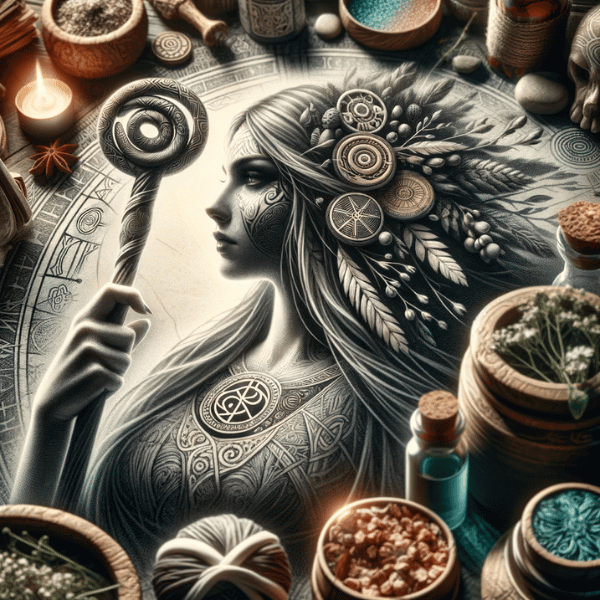
Depictions in Norse Art and Literature
Eir’s presence extends beyond the realm of mythology and finds expression in Norse art and literature. In visual representations, she is often portrayed as a serene and compassionate figure, radiating an aura of comfort and solace. Artists often depict her with her healing staff in hand, emphasizing her role as a divine healer.
In the poetic verses of Norse sagas and Eddas, Eir’s character comes to life through vivid descriptions of her healing abilities and interactions with gods and mortals. Her appearances in these texts evoke a sense of reassurance, for she embodies the promise of healing and restoration in a world fraught with challenges.
Significance of Symbols and Attributes
The symbols and attributes associated with Eir hold profound significance in the context of healing and medicine. Her healing staff signifies her authority and expertise, while medicinal herbs and salves represent her connection to the natural world’s healing powers. These symbols serve as beacons of hope, offering solace to those in pain and reinforcing the belief in recovery and renewal.
In a world where illness and injury were constant companions, Eir’s symbols provided a sense of comfort and guidance. They reminded the Norse people of the healing potential that existed in both the divine and natural realms, instilling confidence in the face of adversity.
4. Eir’s Healing Powers
In-Depth Analysis of Eir’s Healing Abilities
Eir’s presence in Norse mythology revolves around her remarkable healing abilities, which are not only extraordinary but also central to her identity as a goddess. In this section, we embark on a journey to delve deeply into the nuances of her healing powers.
Eir possesses an innate understanding of the human and divine body, enabling her to diagnose ailments and injuries with unparalleled precision. Her healing touch is known to mend even the gravest of wounds, breathing life into the injured and ill. Beyond physical healing, Eir also tends to the spiritual and emotional well-being of those under her care, offering solace and comfort in times of distress.
Specific Herbs, Remedies, and Methods
Eir’s healing repertoire is enriched by her knowledge of specific herbs, remedies, and methods. She wields the power of ancient medicinal plants, harnessing their natural properties to restore health. Some of the herbs associated with Eir include angelica, celandine, and celandine poppy, each known for its unique healing properties. She prepares poultices, salves, and draughts infused with these herbs, crafting potent remedies that alleviate suffering and promote recovery.
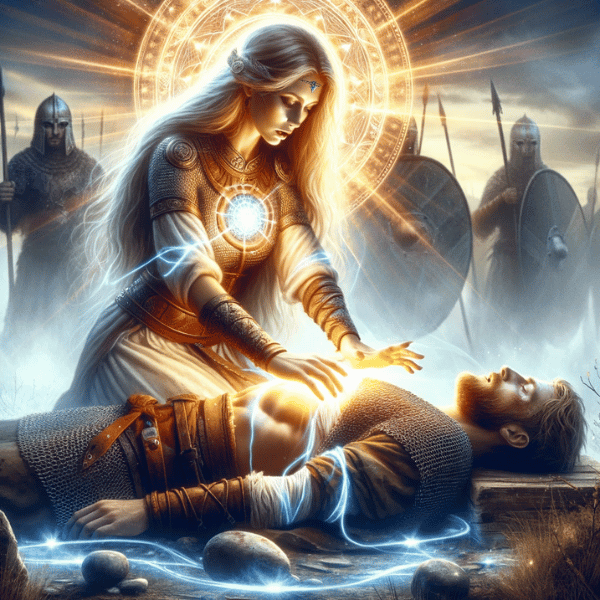
Her methods extend beyond the mere application of herbs. Eir possesses a deep understanding of the body’s energy and balance, enabling her to employ techniques like energy manipulation and spiritual cleansing. Through these methods, she not only heals physical wounds but also addresses the underlying causes of illness, promoting holistic well-being.
Stories Showcasing Eir’s Healing Prowess
Eir’s healing prowess is showcased in several myths and stories from Norse mythology. One such tale recounts her crucial role in the recovery of the beloved god, Balder, after he suffered a grave injury. Her intervention played a pivotal role in restoring Balder to health, highlighting the profound impact of her abilities on the divine realm.
In another story, Eir tends to the wounds of the mighty god Thor, who often finds himself in the midst of fierce battles. Her timely assistance ensures Thor’s swift recuperation, underscoring her importance in maintaining the strength and balance of the Aesir.
5. Eir’s Importance in Norse Culture
Eir’s Elevated Status
In the annals of Norse society, Eir occupied a revered position, transcending her mythological existence to become a symbol of hope, resilience, and the enduring human spirit. Her importance in Norse culture can be attributed to several factors that extended beyond the boundaries of mythology.
Eir’s primary role as a healer was of paramount significance in a society where physical ailments, injuries, and illnesses were common challenges. Her ability to mend wounds and cure diseases made her a beacon of hope in a world fraught with peril and uncertainty. The Norse people held her in the highest regard, seeking her divine intervention in times of health crises.
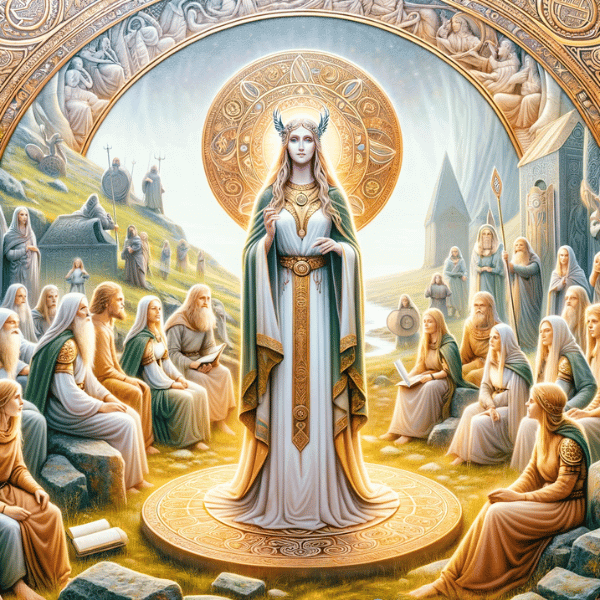
Healers and Medicine in Ancient Norse Culture
Healers and practitioners of medicine played an integral role in ancient Norse culture. These individuals were highly respected for their ability to alleviate suffering and promote well-being. They relied on a deep knowledge of herbs, remedies, and spiritual practices, drawing inspiration from figures like Eir.
In Norse society, the art of healing was closely tied to spirituality and the natural world. Healers, like Eir, used a combination of herbal medicine and spiritual rituals to address both physical and spiritual aspects of health. They were regarded as intermediaries between the divine and mortal realms, channeling the healing powers of the gods.
Eir’s Influence Beyond Mythology
Eir’s influence extended beyond the realm of mythology into real-life practices, leaving a lasting legacy in Norse culture. People established temples and sacred spaces dedicated to healing and well-being in her honor, where they sought solace and remedies for their ailments. These places served as centers of both physical and spiritual healing.
Furthermore, the Norse people incorporated Eir’s symbols and attributes into their daily lives. Norse society deeply ingrained the belief in Eir’s benevolence, cultivating and utilizing medicinal herbs associated with her for healing purposes, and invoking her name in prayers and incantations seeking her guidance and favor.
6. Eir’s Modern Influence
Continued Interest in Eir and Norse Mythology
Eir’s presence and the allure of Norse mythology remain vibrant in the modern world. In an era characterized by rapid change, the enduring fascination with Eir and her fellow Norse deities is a testament to the timelessness of their stories. Contemporary audiences continue to explore and celebrate the rich tapestry of Norse mythology through various mediums.
Resonance with Contemporary Audiences
Eir’s character and healing attributes strike a chord with modern audiences for several reasons. In an age marked by the pursuit of physical and mental well-being, Eir’s role as a healer holds immense appeal. Her compassionate nature, combined with her exceptional expertise, resonates with those seeking solace and restoration in a world filled with challenges and uncertainties.
Eir’s representation as a symbol of hope and recovery serves as a source of inspiration for individuals facing adversity. Her story teaches us that healing is not just about mending the body but also about nurturing the spirit. In times of illness, stress, and turmoil, Eir’s image serves as a reminder that healing is a holistic journey encompassing physical, emotional, and spiritual aspects.
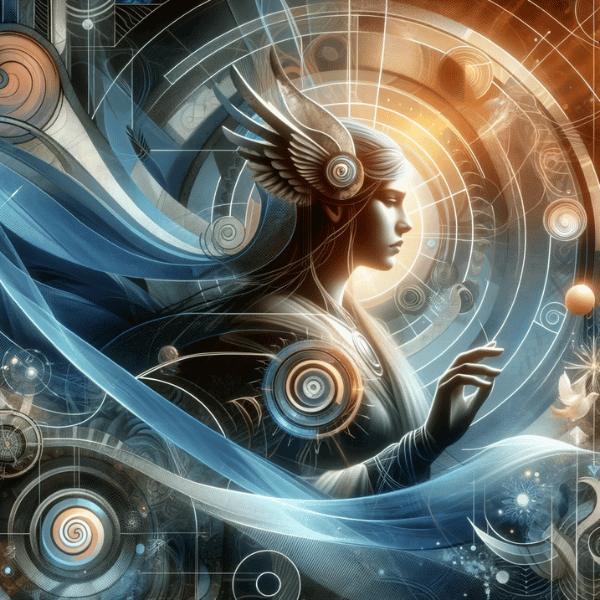
Pop Culture References and Adaptations
Eir’s influence extends into popular culture, where her character and attributes find a place in various forms of entertainment. In literature, contemporary authors often draw upon Norse mythology to craft compelling stories, with Eir making appearances as a character or a source of inspiration.
In the world of gaming, Norse mythology has become a fertile ground for storytelling, with Eir sometimes featured as a character or referenced in titles that explore the mystical and heroic aspects of the Norse pantheon. These adaptations introduce Eir to new generations, keeping her legacy alive in the digital age.
7. Conclusion:
In the tapestry of Norse mythology, Eir emerges as a luminous beacon of healing and hope. Through this comprehensive journey, we’ve uncovered the depths of her character, her pivotal role in Norse mythology, and the enduring legacy she leaves behind. Eir’s divine presence, rooted in her unparalleled healing abilities, touches not only the myths of old but also resonates with the modern world’s yearning for well-being. She stands as a symbol of compassion, a guardian of health, and a testament to the enduring power of healing in both the realms of myth and the hearts of those who seek solace and restoration. In the timeless story of Eir, the goddess of healing, we find a reflection of our own enduring quest for wholeness and the enduring legacy of her benevolent touch in the tales of the North.
